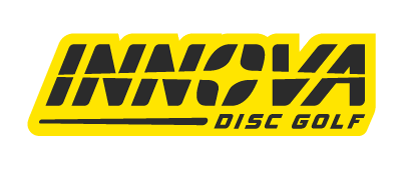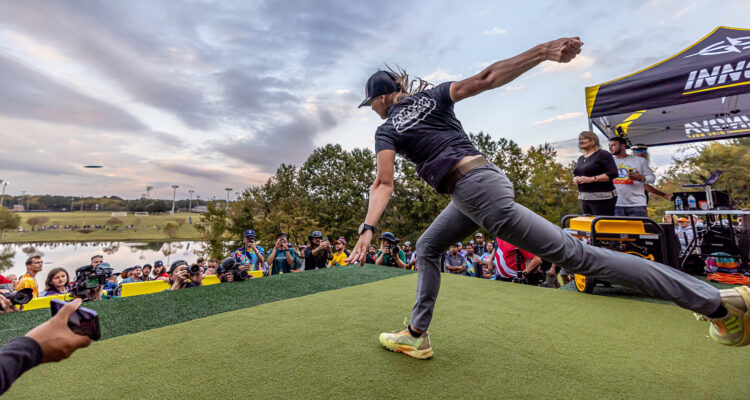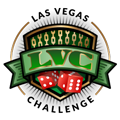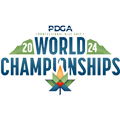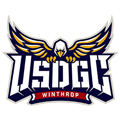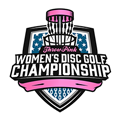Improve Your Distance
What made you fall in love with disc golf? Was it the first time that you saw someone throw a disc farther than seemed possible? Your friend took you out to the course, ripped one over 300 feet, and you thought, “Wow. I have to learn how to do that.”
Nothing in the game is more epic or beautiful than a full S-curve slung to max distance. In this article, we provide some form tips to help you throw farther. Adding distance is often a game of taking one step back in order to move two steps forward. Be ready to scrap form elements that are working in pursuit of form elements that work better.
Imagine Your Flight Path
The first step to throwing a great drive is being intentional about your desired flight path. Closing your eyes and ripping it as hard as you can isn’t going to add distance. Picture the line you want the disc to take from your hand to the landing zone. If you are throwing an S-curve, at what point in the flight do you want it to start turning? What angle do you need to release on to make that happen? Pick checkpoints in the sky that you want your disc to cross through on its way to your landing zone or the target. Visualize the shot that crosses through those imaginary points in the sky and then execute.
This will also keep you honest in your assessment of how each throw went. Did you park the hole, but completely miss your line? If you visualized the shot beforehand, it will be harder to be results oriented. On the flip side, if you hit your line exactly as intended, but catch a branch that you couldn’t see from the tee, you can still take confidence knowing you threw the disc as intended.
View this post on Instagram
Plant First, Then Throw
One of the biggest flaws in many players’ forms is throwing before they have planted the front foot. Some players try to throw and plant at the same time, essentially releasing during the wrong step of the run-up. Plant the front foot first (the right foot for right handed players), then push off the back leg, open the hips, drive with the shoulder, and rip it.
If you try to pull the disc forward as your front foot hits the ground, you lose out on hip rotation and power from your back leg. Think about hitting the peak of your reach back at the same moment that you plant your right, front foot.
There are many players who learn to throw fairly well and decently far with incorrect form in this area. If you’ve plateaued in your backhand distance, even if you can throw over 400 feet, you might be able to reach elite level distance by making this change.
Stagger Your Feet
There is a seemingly small mistake that makes all the difference between huge distance and average distance. It is about where you plant your front foot relative to your back foot in the final step of your run-up. Imagine three points on a line: one point is the back foot which you push off of, the second point is the plant foot that you pivot around, and the third point is your aim point in the distance. If these three points make a straight line, you are not positioned for maximum distance. The plant foot needs to be in front of the back foot, such that the hips are rotated slightly away from the target. This will wind up your core and hips so they can rotate and engage as you drive. Your front foot (right foot for right-handed players) needs to plant staggered out in front of your back foot so that you can rotate as you push off the back leg. In other words, the front foot should be closer to the left side of the tee pad and the back foot should be closer to the right side of the tee pad.
Power Pocket
Many top touring pros cite hitting the “power pocket” as the most important element to maximum distance drives. The power pocket is the moment in the throw at which you have a 90 degree angle between your shoulder and bicep and a 90 degree angle between the bicep and forearm. As you drive, the disc must pass through the power pocket for you to achieve maximum distance.
Hitting the power pocket allows you to transfer the most energy into the disc. To tell if you are hitting the power pocket, pretend you are trying to elbow something hard with your throwing arm. The same arm position that allows you to transfer the most force when elbowing something, allows you to transfer the most force into the disc when throwing.
Learn the Wind
In different wind conditions, you will have to adjust your angles and disc selection to maximize distance. Your first line of defense should be changing your disc selection. In a headwind, throw faster and more overstable. In a tailwind, throw a disc that is less stable. A power player may throw a Shryke in a tailwind. The same player will throw a Destroyer in a headwind and a Charger in gentler wind conditions.
Learning your angles is also key to playing in the wind. As a general rule to maintain accuracy, do not expose the bottom of the flight plate to the wind; doing so will cause your disc to get lifted and carried. The exception is if you have a left to right crosswind or tailwind. In this case, exposing the bottom of the flight plate to the wind can add distance.
Timing is Everything
If you have been reading our recent articles, this one is a recurring theme; timing is everything in disc golf. When you try to throw farther, it is natural to want to throw harder. Unless you can do so with good timing, thinking about throwing harder will cause you to be less accurate with no added distance. Slow down and focus on your timing. A great drive involves syncing the movement between your legs, hips, core, and upper body. If you throw efficiently (meaning most of your expended energy gets transferred into the disc) then a smooth, controlled form can still result in a massive drive.
View this post on Instagram
Nose Down
Achieving the proper nose angle can be hard for new players, especially those transitioning from other disc sports. For distance shots, you need to keep the nose of the disc pointed downward as you release. Discs thrown with the nose up will travel less far and will hyzer out early. If you can throw 300 feet with the nose up, the same shot would travel 350+ with a small adjustment to the nose angle.
The best way to make sure your disc comes out with the nose down is to simply over-exaggerate the nose down angle in your hand before you start the throw. This may require an adjustment to your grip. With time, you can use varying nose angles as a tool to help you control distance.
View this post on Instagram
Try Different Discs in Different Weights
Try out a wide range of molds in a range of weight classes to learn what works best for your form and arm speed. A Max Weight Destroyer simply isn’t the best distance disc for most of us. Try out the Charger, the Shryke, or the Mamba.
Try a lightweight Wraith or Boss. Lighter weight plastic will add distance for most players in no wind or tailwind. The Distance World Record of 1108 feet was set by Team Innova’s own David Wiggins Jr. with a 154 gram Boss. One of the greatest shots in disc golf history, Philo Braithwaite’s Albatross, was thrown with a 168 gram Destroyer. Experiment with different weights and molds. Some of the best shots in history have been thrown with lighter discs.
